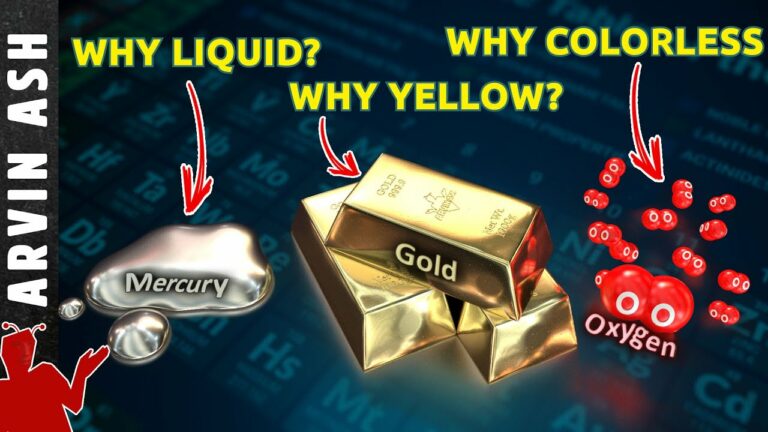Why is Mercury a Liquid? Gold Yellow? Oxygen colorless? How Elements Get Their Properties
Why are some of elements gases, liquids, or solids? Why are they different colors? What is the root cause of the physical properties of different elements? The simple answer is that it’s the element’s nuclear properties and behavior of its electrons that determines its chemical properties and physical properties. Here are the details:
We are defining “standard conditions” as 68 degrees Fahrenheit, and 14.7psi atmospheric pressure for properties. Why helium is a colorless gas, mercury is a silvery white liquid, andd iron a shiny gray metal? The electron configuration is the reason.
Helium has two protons, and thus 2 electrons in its neutral state. The first two electrons of any element occupy the first electron shell, making it full.
Because the shell has a complete set of electrons, Helium does can not usually take on any extra electrons, nor share its electrons with other elements, including itself. So it doesn’t react with anything. It simply floats around as individual atoms. Their non-reactivity with other atoms prevents them from forming a condensed phase, like a liquid or metal. The same principle generally applies to the other noble elements.
Non-noble gases such as oxygen and Nitrogen are gases not because they don’t interact, but because they prefer to interact with themselves to form stable molecules. They are stable and do not form a condensed state. These gases are colorless because they do not absorb or emit photons. Since light simply passes right through these gases, they appear transparent. But gases like fluorine and iodine do absorb photons. So they have color because we see the complimentary color of the absorbed light.
In general, an element is a liquid when its atoms are able to slide over each other and move. its inter-atomic force of attraction is relatively weak, still stronger than a gas, but only strong enough for the atoms to stick to each other, not strong enough to stop movement. So its structure does not retain a definite shape.
#elements
A substance is only solid when its atoms are held together by stronger inter-atomic forces such that that the atoms for the most part, stay put, and can’t slide past each other. This is the case for iron.
But Mercury is a liquid because it has a full outer shell of electrons, and so it does not like to share its electrons much in the metallic matrix. This makes the atoms able to move around, making it a liquid.
A relativistic effect that also plays a role making the electrons of Mercury less available for sharing. The 6s shell electrons have a high orbital speed, 58% the speed of light, resulting in a gamma factor of 1.23. This means they gain a relativistic mass which adds about 23% to the rest mass of the electrons. Since the orbital radius is inversely proportional to mass, this higher mass results in a smaller radius, bringing the electrons closer and more strongly bound to the nucleus, and making them less available for sharing.
Why are most metals gray? This is a direct result of photon absorption by electrons in the d orbital of most metals. This energy absorption results in the d electrons making a jump to the higher s orbitals. This typically requires very high energy levels to happen, so only high energy ultraviolet photons enable this. Photons with lower frequencies in the visible spectrum are not absorbed and simply reflected. This reflected light is what we see, which is typically a silvery gray, which is just a shade of white. The gray we perceive is due to reflectivity of the metal.
Some metals such as gold have a different color because their d electrons require a lower energy to move to an S orbital. So gold absorbs energy in the visible blue range of the spectrum. White light without blue takes on a yellowish “golden” color we see.
Do not forget to share your opinion with us to provide you with the best posts !




0 Comments